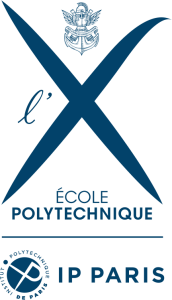The beginner level Italian course is intended for students who wish to quickly learn the basics of the language in order to be able to understand and be understood, engage in everyday conversation, read and write. Learning grammar constitutes the basis of teaching, using intensive and interactive written and oral exercises. No aspect of learning is neglected: reading, translation, listening, transcription of song texts, singing, opera, theater, cinema. Situations, vocabulary, gestures, culture, will be integrated with the aim of making students active in their learning. Grammar will be approached according to a coherent progression within the framework of contextualized learning situations.
Communication practices will therefore constitute the priority objective of learning. Their teaching will remain inseparable from the study of the culture in which linguistic practices are embedded.
- Profesor: Busilacchi Silvia
- Profesor: Chiara Elisabetta
- Profesor: Morabito Manuela
- Profesor: Schiavoni Chiara
This group is aimed at students with a wide range of backgrounds; in addition to those who have already studied Italian as a second or third language at secondary school, there are students who have lived in Italy, those of Italian origin or those who have travelled there frequently.
- Profesor: Morabito Manuela
This group is aimed at students with a wide range of backgrounds: in addition to those who have already studied Italian at secondary school as a second language and/or in ESABAC, there are also students who have lived in Italy and those of Italian origin.
- Profesor: Morabito Manuela
Communication practices will therefore be the priority learning objective. Their teaching will remain inseparable from the study of the culture in which linguistic practices are embedded.
- Profesor: Busilacchi Silvia
- Profesor: Chiara Elisabetta
- Profesor: Morabito Manuela
- Profesor: Schiavoni Chiara
This course is a continuation of the P1 course.
Italian current affairs will be studied and put into perspective. Oral expression will be encouraged through the organisation of debates based on specific themes.
- Profesor: Morabito Manuela
- Profesor: Morabito Manuela
The beginner level Italian course is intended for students who wish to quickly learn the basics of the language in order to be able to understand and be understood, engage in everyday conversation, read and write. Learning grammar constitutes the basis of teaching, using intensive and interactive written and oral exercises. No aspect of learning is neglected: reading, translation, listening, transcription of song texts, singing, opera, theater, cinema. Situations, vocabulary, gestures, culture, will be integrated with the aim of making students active in their learning. Grammar will be approached according to a coherent progression within the framework of contextualized learning situations. Communication practices will therefore constitute the priority objective of learning. Their teaching will remain inseparable from the study of the culture in which linguistic practices are embedded.
- Profesor: Morabito Manuela
- Profesor: Moreschini Giulia
- Profesor: Schiavoni Chiara
This course is a continuation of P2.
Italian current affairs will be studied and put into perspective. Oral expression will be encouraged through the organisation of debates based on specific themes.
- Profesor: Morabito Manuela
- Profesor: Morabito Manuela
